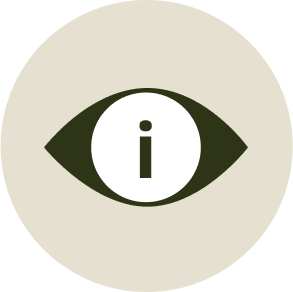GA imaging

Identifying GA using OCT
Identifying GA using OCT
Welcome to this educational module on how to identify geographic atrophy (GA) using optical coherence tomography (OCT) imaging. Explore the interactive patient case studies* below to find out more about key aspects of diagnosing and monitoring geographic atrophy using OCT.
Choroidal hypertransmission
On OCT, GA appears as areas of loss of photoreceptors, retinal pigment epithelium (RPE), and underlying choriocapillaris, with increased reflectivity from underlying choroid and choriocapillaris (hypertransmission defects).1,2 Find out more about identifying choroidal hypertransmission in patients with GA.
Foveal involvement
GA lesions typically start in the nonsubfoveal region and expand into the fovea, but visual function can be impacted even before the fovea is affected.1 View a case study exploring the impact of foveal involvement on geographic atrophy patients’ visual function.
Photoreceptor degeneration
OCT can be used to detect changes in photoreceptor and RPE layer integrity, which can act as a clinically meaningful biomarker in geographic atrophy.3,4 Learn more about the signs of photoreceptor degeneration and loss in GA.
GA biomarkers 1
View this patient case study to learn more about risk factors for the progression of age-related macular degeneration (AMD) to geographic atrophy that can be identified using OCT, such as drusen, reticular pseudodrusen, and change in drusen volume.5
GA biomarkers 2
Learn about further geographic atrophy biomarkers that can be identified using OCT, including foveal drusenoid pigment epithelial detachment (PED) and microcystic degeneration.

Module overview
Access a summary of the learnings from this module on identifying geographic atrophy using OCT.
Join us on our journey in geographic atrophy
Be the first to receive the latest geographic atrophy news
Thank you for submitting your details.
Please check your inbox for confirmation

Progression in geographic atrophy
Geographic atrophy is progressive and irreversible, eventually leading to permanent vision loss.1,6-8

Identifying patients with geographic atrophy
Early detection and monitoring of geographic atrophy, and timely referral of appropriate patients is critical.9

Complement overactivation in geographic atrophy
Overactivation of the complement system can be detrimental and is associated with several serious diseases, including geographic atrophy.10
*Patients mentioned in these case studies are fictional and included for illustrative purposes only.
References
- Fleckenstein M, et al. Ophthalmology. 2018;125(3):369–390.
- Sadda SR, et al. Retina. 2016;36(10):1806–1822.
- Pfau M, et al. JAMA Ophthalmol. 2020;138(10):1026–1034.
- American Academy of Ophthalmology. Novel Therapies and New Biomarkers for Geographic Atrophy. 2023. Available at: https://www.aao.org/eyenet/article/novel-therapies-new-biomarkers-geographic-atrophy (Accessed December 2023).
- Heesterbeek TJ, et al. Ophthalmic Physiol Opt. 2020;40(2):140–170.
- Boyer DS, et al. Retina. 2017;37(5):819–835.
- Lindblad AS, et al. Arch Ophthalmol. 2009;127(9):1168–1174.
- Holz FG, et al. Ophthalmology. 2014;121(5):1079–1091.
- Legge A. Keeping an eye on geographic atrophy. 2023. Available at: https://www.optometrytimes.com/view/keeping-an-eye-on-geographic-atrophy (Accessed December 2023).
- Liao DS, et al. Ophthalmology. 2020;127(2):186–195.
EU-GA-2300054 December 2023
